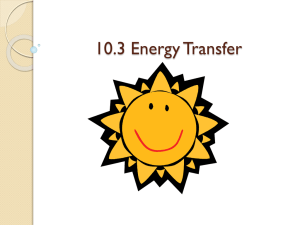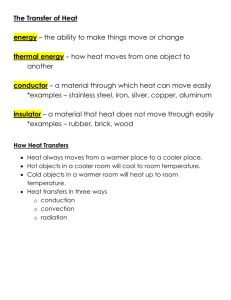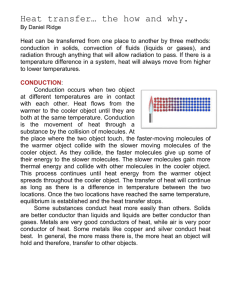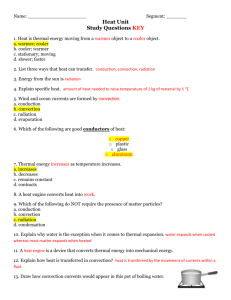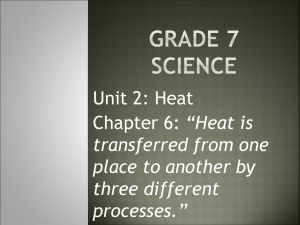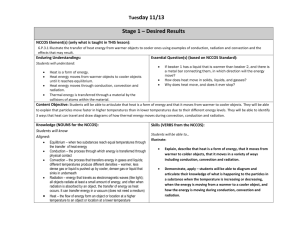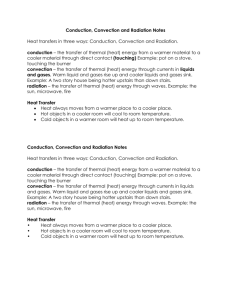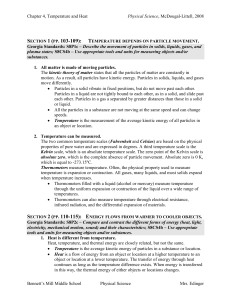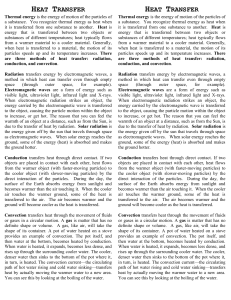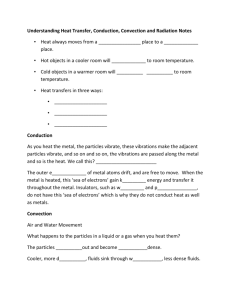attached document
advertisement
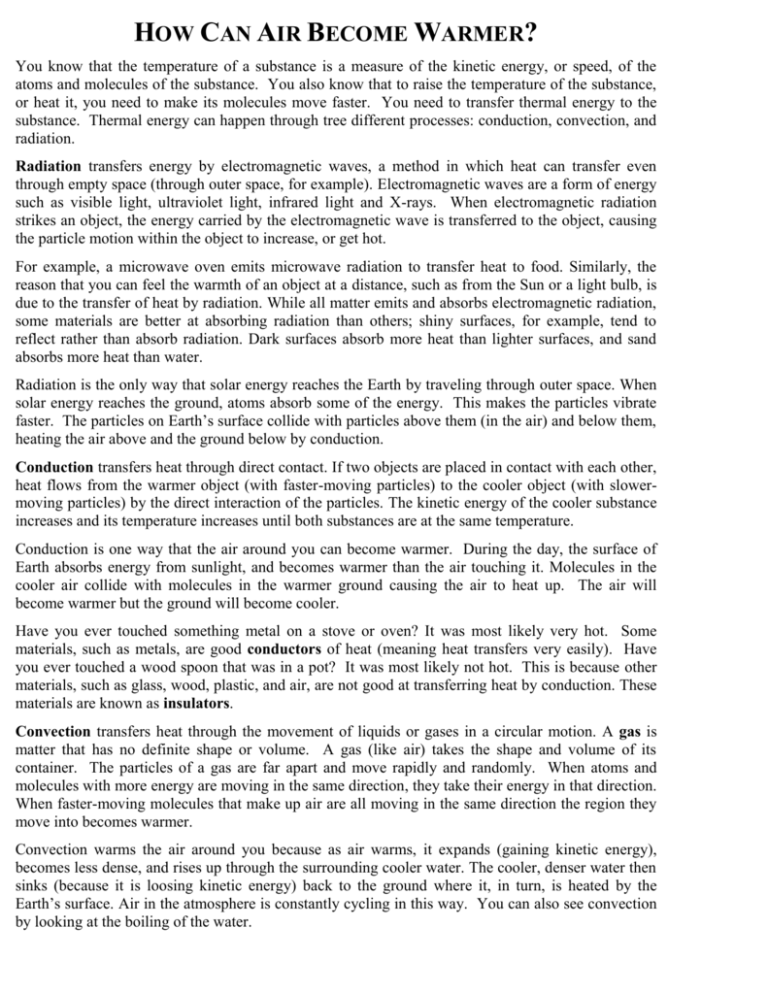
HOW CAN AIR BECOME WARMER? You know that the temperature of a substance is a measure of the kinetic energy, or speed, of the atoms and molecules of the substance. You also know that to raise the temperature of the substance, or heat it, you need to make its molecules move faster. You need to transfer thermal energy to the substance. Thermal energy can happen through tree different processes: conduction, convection, and radiation. Radiation transfers energy by electromagnetic waves, a method in which heat can transfer even through empty space (through outer space, for example). Electromagnetic waves are a form of energy such as visible light, ultraviolet light, infrared light and X-rays. When electromagnetic radiation strikes an object, the energy carried by the electromagnetic wave is transferred to the object, causing the particle motion within the object to increase, or get hot. For example, a microwave oven emits microwave radiation to transfer heat to food. Similarly, the reason that you can feel the warmth of an object at a distance, such as from the Sun or a light bulb, is due to the transfer of heat by radiation. While all matter emits and absorbs electromagnetic radiation, some materials are better at absorbing radiation than others; shiny surfaces, for example, tend to reflect rather than absorb radiation. Dark surfaces absorb more heat than lighter surfaces, and sand absorbs more heat than water. Radiation is the only way that solar energy reaches the Earth by traveling through outer space. When solar energy reaches the ground, atoms absorb some of the energy. This makes the particles vibrate faster. The particles on Earth’s surface collide with particles above them (in the air) and below them, heating the air above and the ground below by conduction. Conduction transfers heat through direct contact. If two objects are placed in contact with each other, heat flows from the warmer object (with faster-moving particles) to the cooler object (with slowermoving particles) by the direct interaction of the particles. The kinetic energy of the cooler substance increases and its temperature increases until both substances are at the same temperature. Conduction is one way that the air around you can become warmer. During the day, the surface of Earth absorbs energy from sunlight, and becomes warmer than the air touching it. Molecules in the cooler air collide with molecules in the warmer ground causing the air to heat up. The air will become warmer but the ground will become cooler. Have you ever touched something metal on a stove or oven? It was most likely very hot. Some materials, such as metals, are good conductors of heat (meaning heat transfers very easily). Have you ever touched a wood spoon that was in a pot? It was most likely not hot. This is because other materials, such as glass, wood, plastic, and air, are not good at transferring heat by conduction. These materials are known as insulators. Convection transfers heat through the movement of liquids or gases in a circular motion. A gas is matter that has no definite shape or volume. A gas (like air) takes the shape and volume of its container. The particles of a gas are far apart and move rapidly and randomly. When atoms and molecules with more energy are moving in the same direction, they take their energy in that direction. When faster-moving molecules that make up air are all moving in the same direction the region they move into becomes warmer. Convection warms the air around you because as air warms, it expands (gaining kinetic energy), becomes less dense, and rises up through the surrounding cooler water. The cooler, denser water then sinks (because it is loosing kinetic energy) back to the ground where it, in turn, is heated by the Earth’s surface. Air in the atmosphere is constantly cycling in this way. You can also see convection by looking at the boiling of the water.
